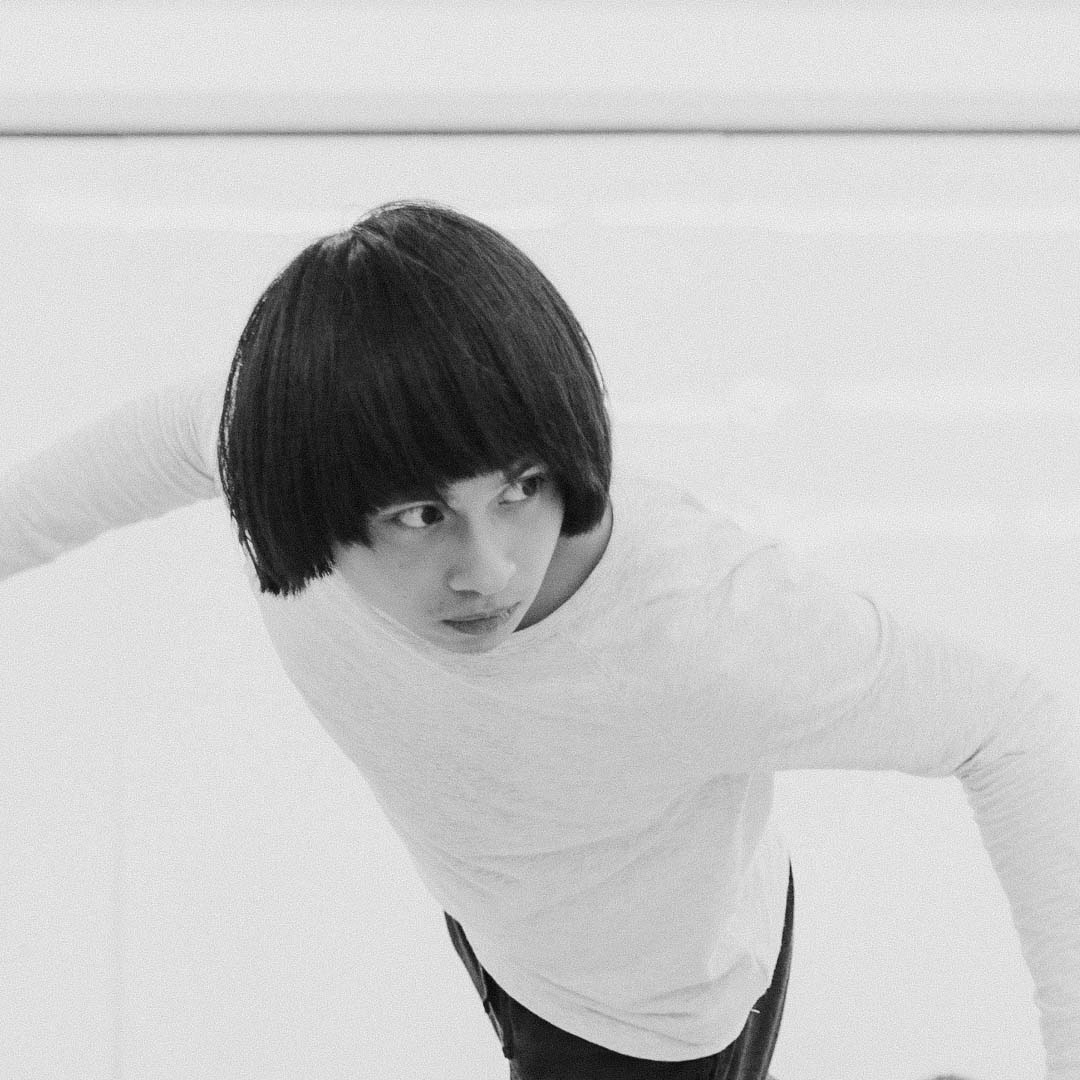Takako Hamano
The flat sea in the Netherlands and the rounded mountains in Japan—imagine they are connected through waves (hadou), from micro to macro scales.
How would Ema's dancing body sense these connections of waves? How would her movements interact with ever-changing, wave-like forms—elementary particles, voices of water, wind, birds, invisible elements? Where am I (are we, are you) and who am I (are we, are you) observing those interactions?
I explore these questions in two films, shifting mountains: umi and shifting mountains: yama, which unfold as visual poetry, yearning for the interconnectedness of the universe.

Takako Hamano

The flat sea in the Netherlands and the rounded mountains in Japan—imagine they are connected through waves (hadou), from micro to macro scales.
How would Ema's dancing body sense these connections of waves? How would her movements interact with ever-changing, wave-like forms—elementary particles, voices of water, wind, birds, invisible elements? Where am I (are we, are you) and who am I (are we, are you) observing those interactions?
I explore these questions in two films, shifting mountains: umi and shifting mountains: yama, which unfold as visual poetry, yearning for the interconnectedness of the universe.
Dramaturg's Notes
The Japanese aesthetic of nostalgia, Natsukashisa (懐かしさ) and Koishisa (恋しさ) are the guiding principle behind Takako Hanamo’s films shifting mountains: yama and shifting mountains: umi. The bittersweet feeling triggered by something ephemeral brings to the fore an awareness that time can be past as much as the present and future. Moving between Japan and the Netherlands, for Takako some memories are not only contained within the same space but they travel across the vast human experiences. Each memoryscape is not only a sequence of past events but also a continuum morphing into the future and across various spaces/places.
A recurring motif throughout both films is that of waves. This physically and metaphorically highlights the interconnectedness of nature, the human body, and the quantum realm. In both films, we see the balance between the Japanese landscapes with their towering peaks against the serene and undulating waves of the Netherlands. The rise and fall of the dancer’s breath mirrors the landscapes' patterns, forging a deep connection between the body and the natural world. The landscape and the bodyscape, alongside the drawing-based animations offer rhythms of all things in nature. By highlighting these fluctuations, shifting mountains: yama and shifting mountains: umi underscore the essence of all living entities, portraying life as a dynamic equilibrium of highs and lows, balance and imbalance. This throws into relief questions on how we can position ourselves within nature.
For this project, Takako works closely with dancer Ema Yuasa in both countries, spending equal time in Japan and in the Netherlands. Takako’s brief to her was to embody and respond to the “waves” that she felt and saw in both spaces. This includes responding to the wind, reimagined as the breathing chamber for the landscapes. Ema’s body becomes a canvas and a living landscape - the undulating rhythms of the waves in shifting mountains: umi, offers a stark contrast to the movements to capture the curvatures and contours of the peaks and valleys in shifting mountains: yama. The environment then informs and influences Ema; and through her portrayals she too reflects aspects of the environment as part of herself.
As a pair, the films can be seen as a palimpsest. The landscapes, dancer’s body and drawing-based animations layer meanings upon each other much like the rewriting of texts over time, where traces of the past remain visible beneath the surface. More significantly, and keeping with the Japanese culture of kami, Ema’s body reveals yet another layer of Japanese spiritual culture. Here her embodied movements become a mode of communication and conduit that traces history and cultural beliefs, serving as a medium and living vessel between the human, environments and the spiritual realm - bridging earth and beyond.
About Artist(s)
Takako Hamano
Takako is a Japanese artist currently based in The Netherlands, creating visual artworks that transform everyday experiences into a fantasy world that coexists with reality.
After graduation from High School in the US, Takako returned to Tokyo to study sociology at Rikkyo University. Just before she left the US, her experience of being completely mesmerised by the power of the spring snow melting in the Rocky Mountains sparked her devotion to exploring mountains, caves, rivers, and valleys in Japan.
Following an injury, her doctor advised her to never climb mountains again, so she moved to the flat land of the Netherlands to study Fine Art.
Changing her discipline to Fine Art did not change her research theme: the interconnectedness of the universe.
Takako has developed community research-based art projects around the topics of memories, archetypes, collective awareness or “natsukashisa” (feeling familiar to something which you cannot grasp in reality).
Examples of these projects are Hamano Oinarisan: A tale of pinewoods (2013), Cafe Den Boterham (2019) and Circular Niro (2020~).
.avif)

.avif)




%20(1).avif)
.avif)
.avif)
.avif)


_cropped.avif)






